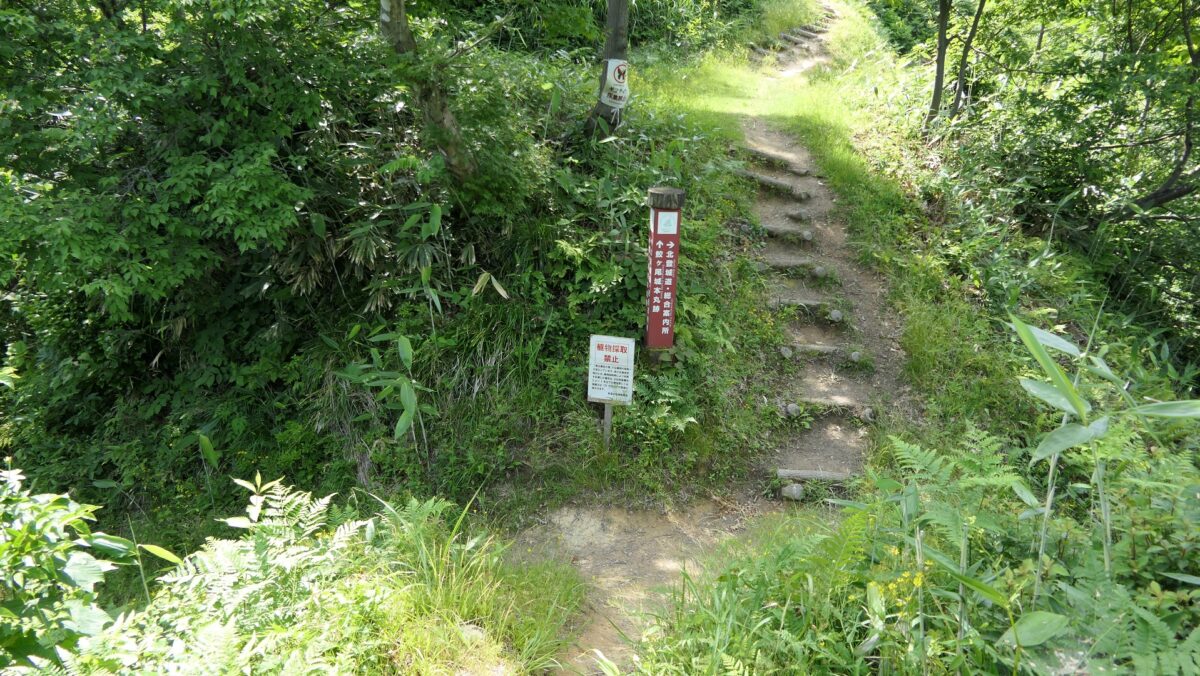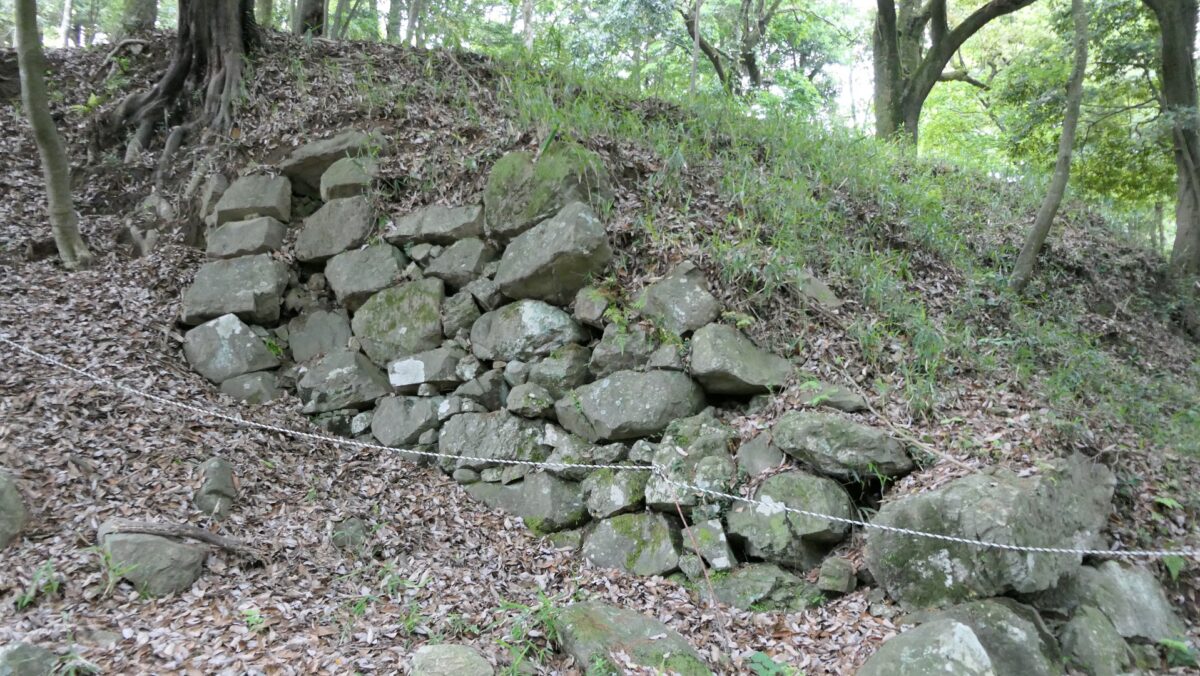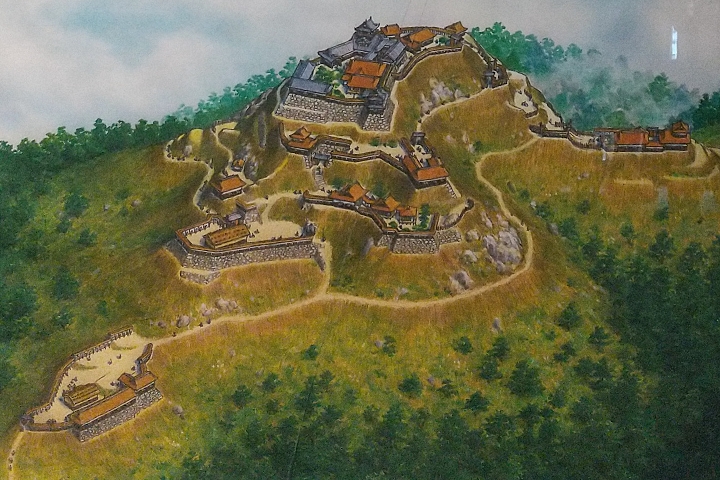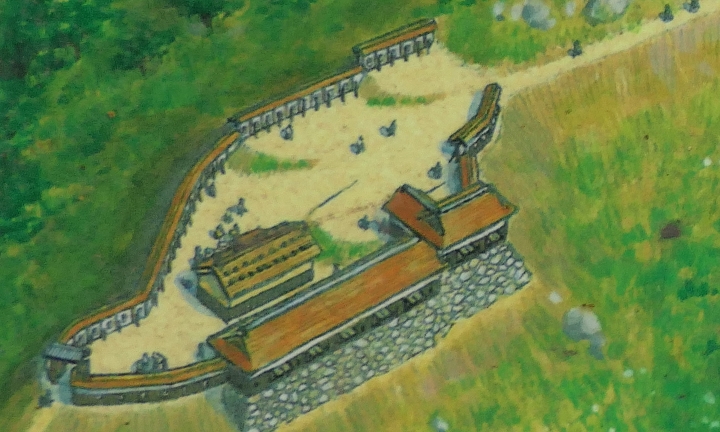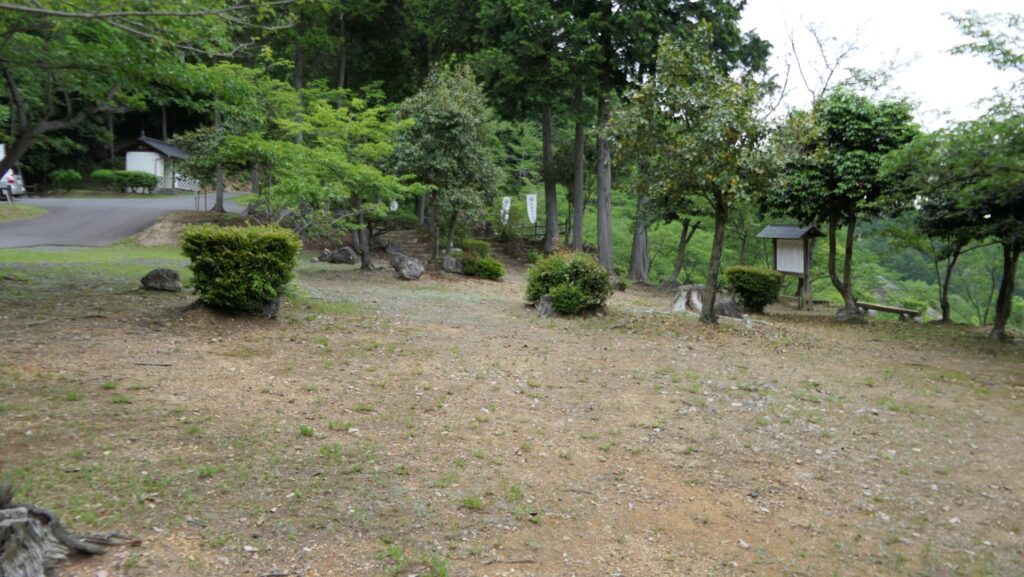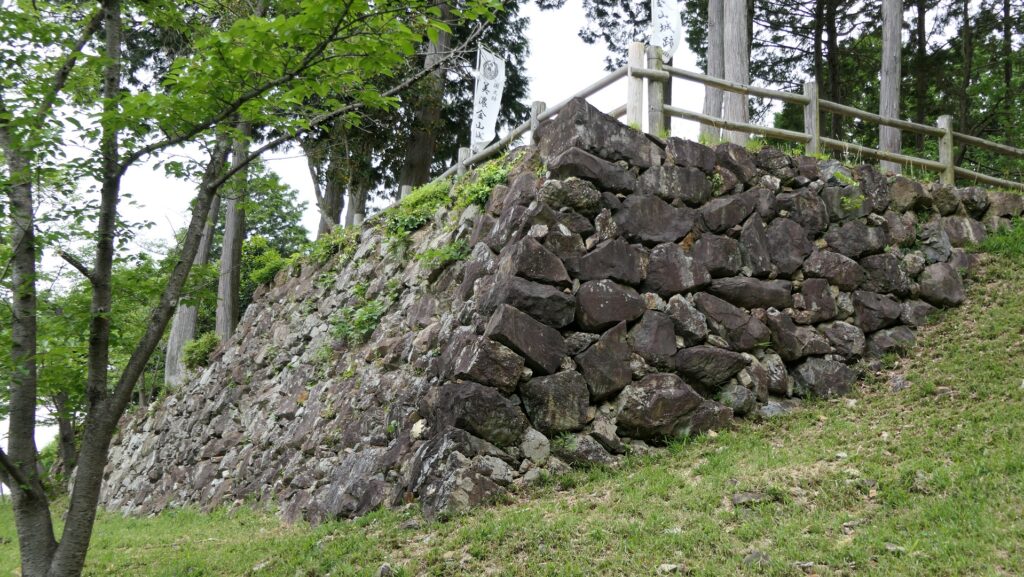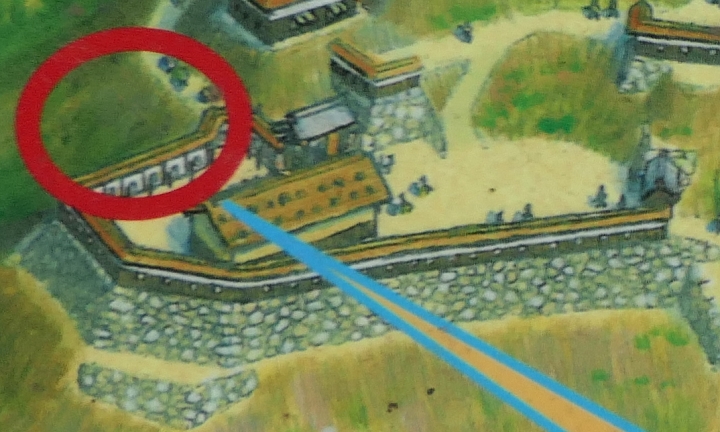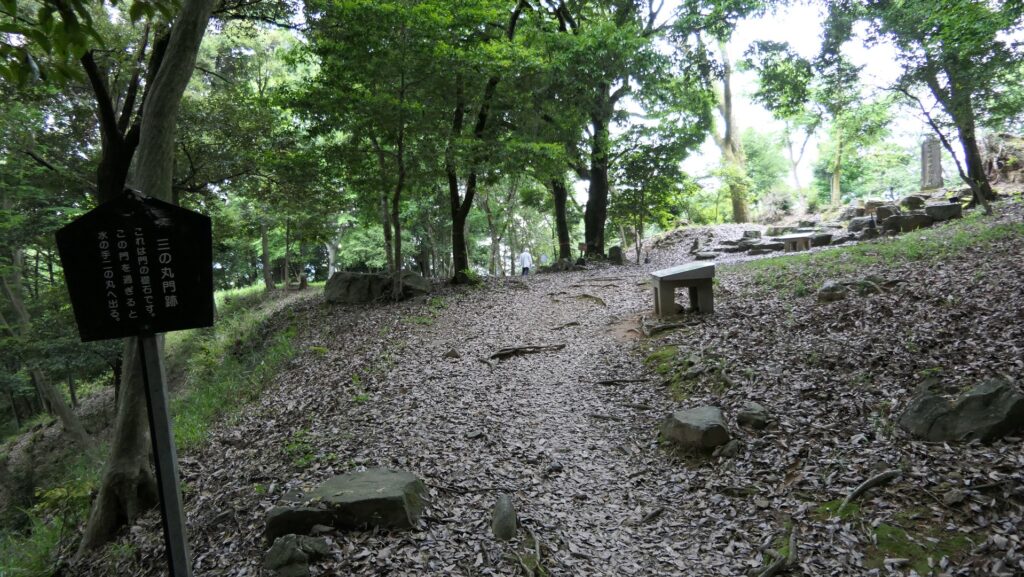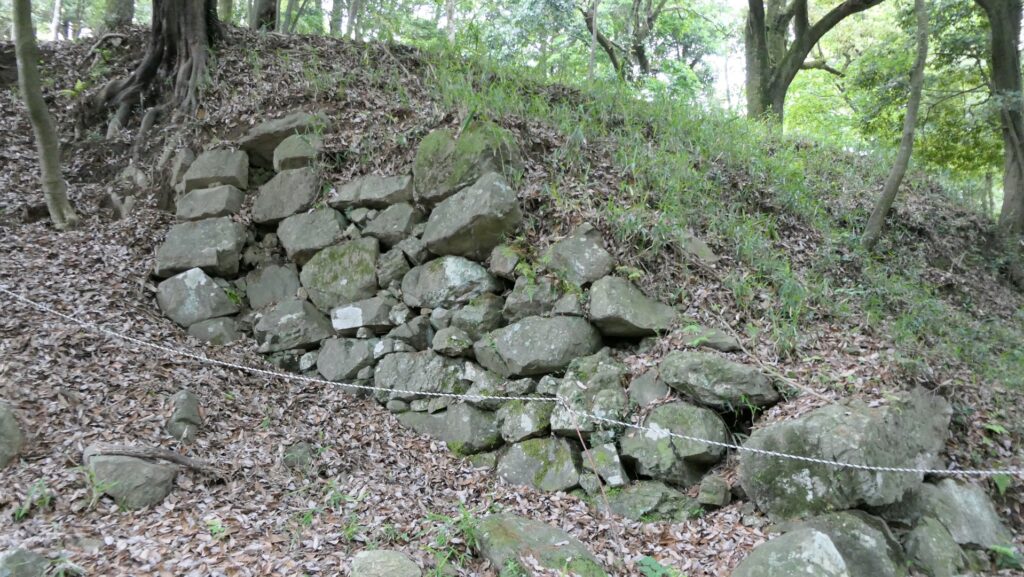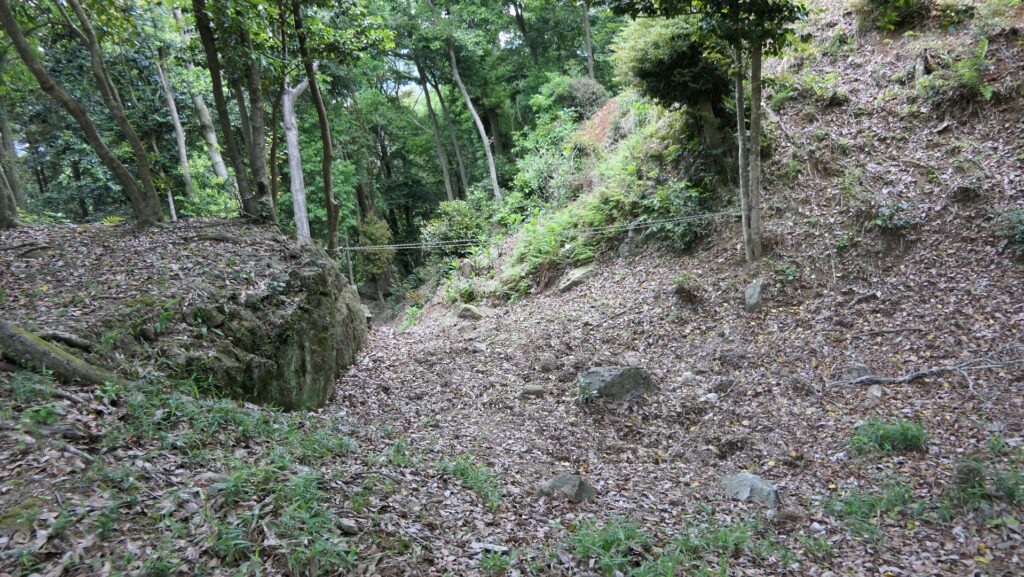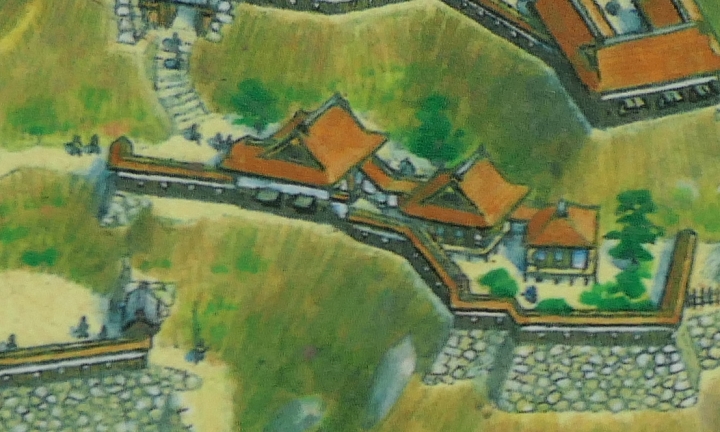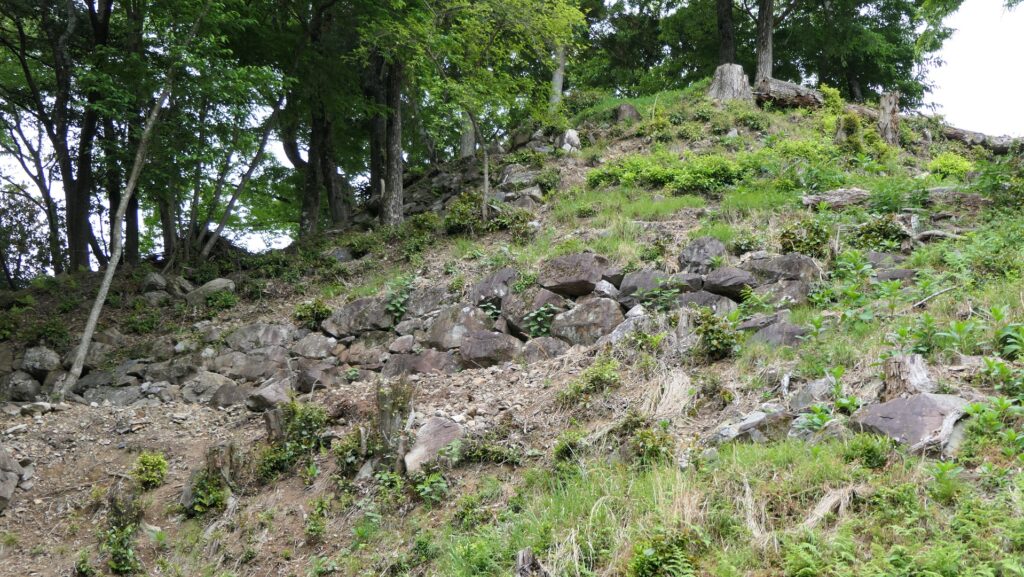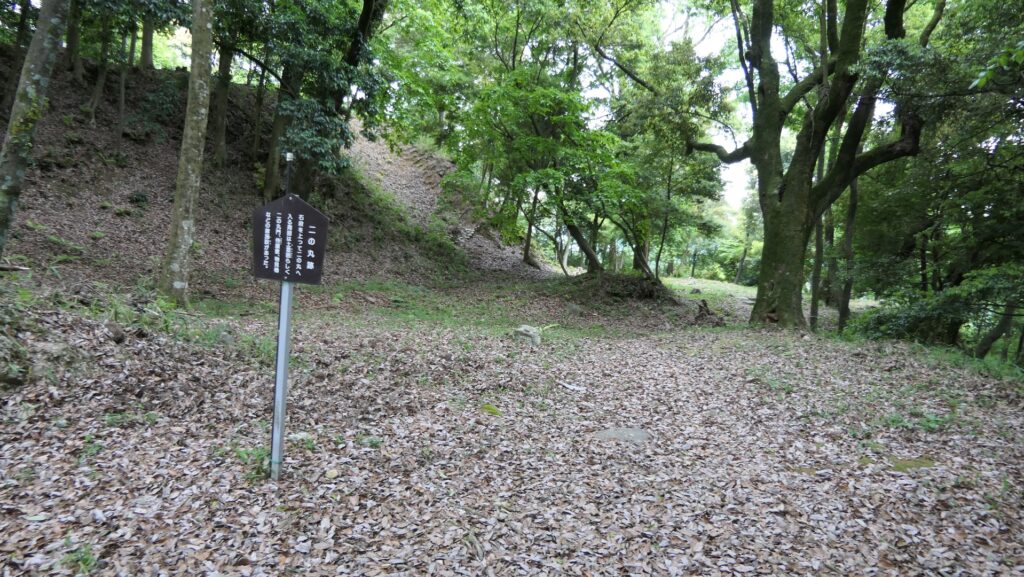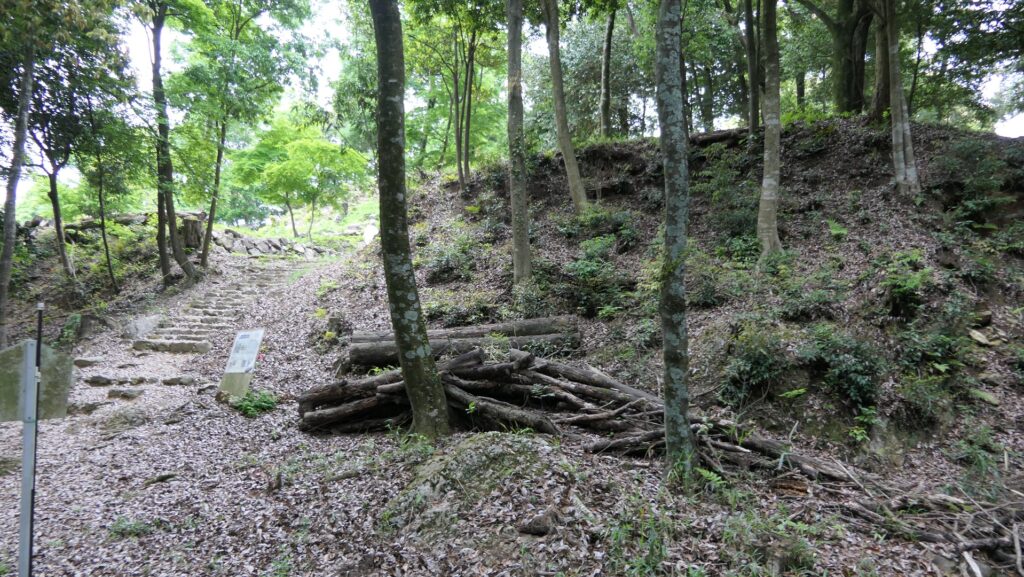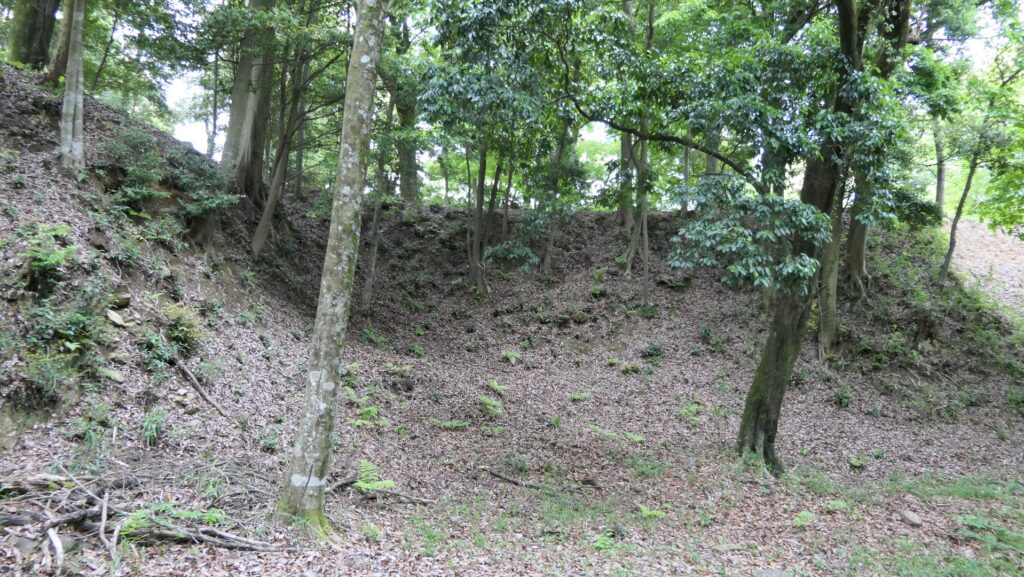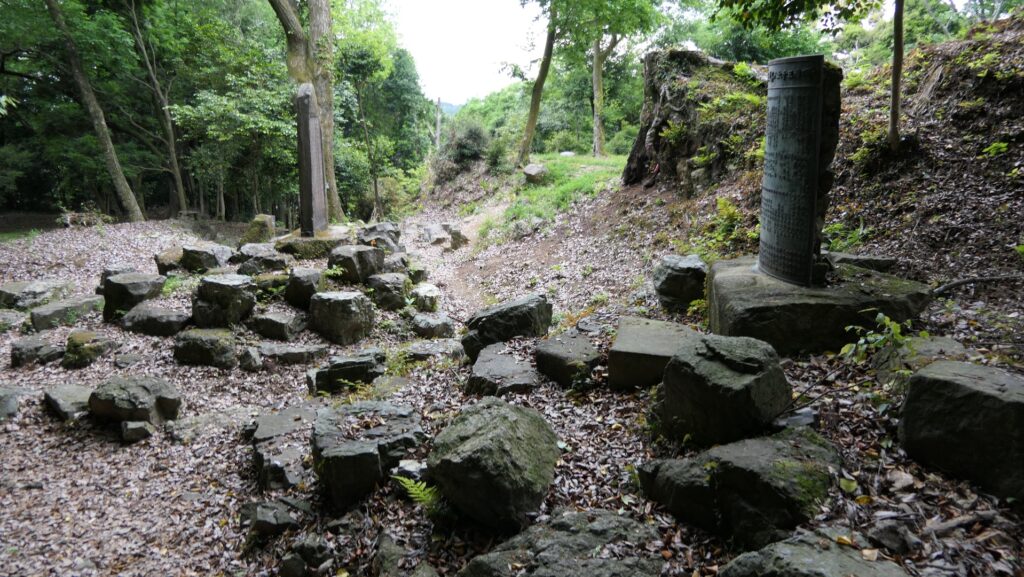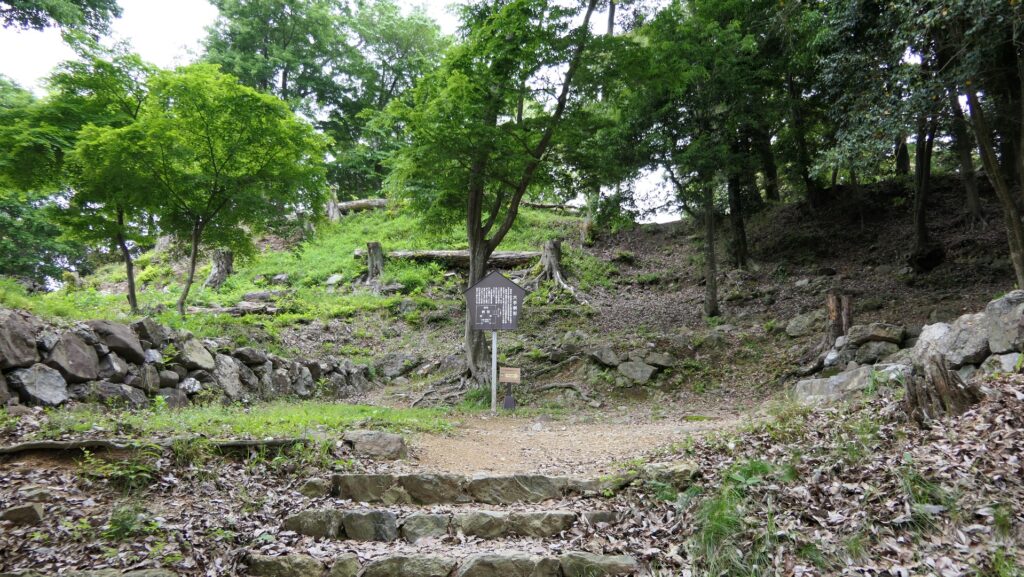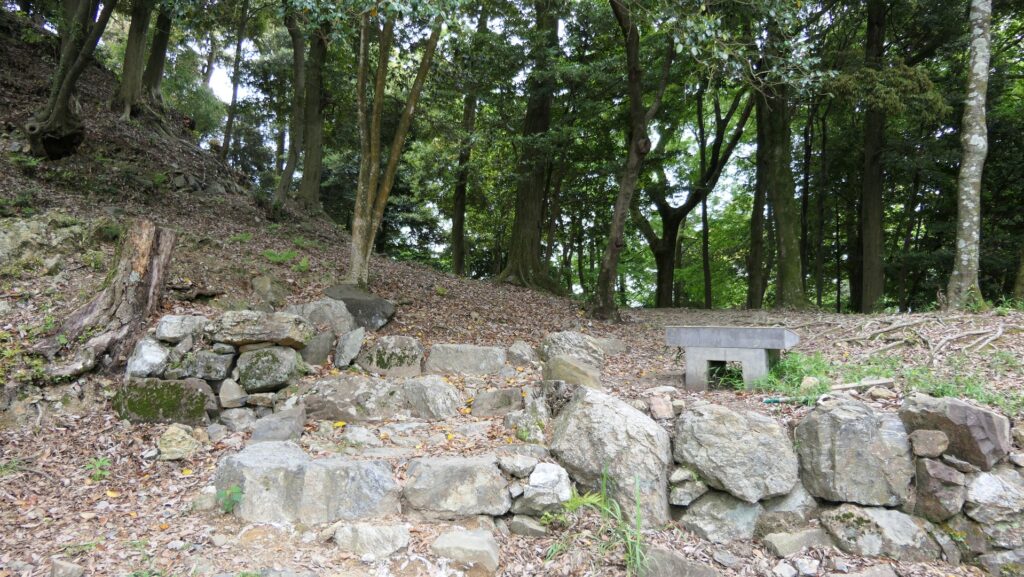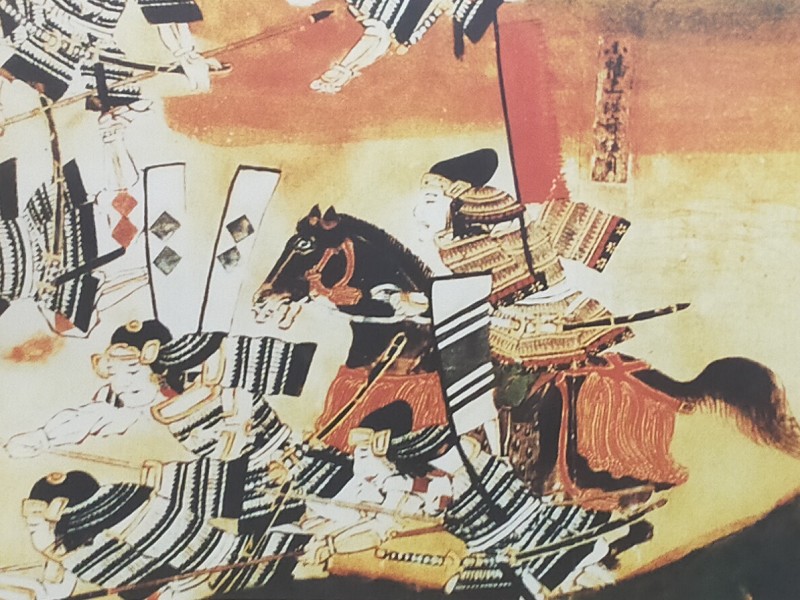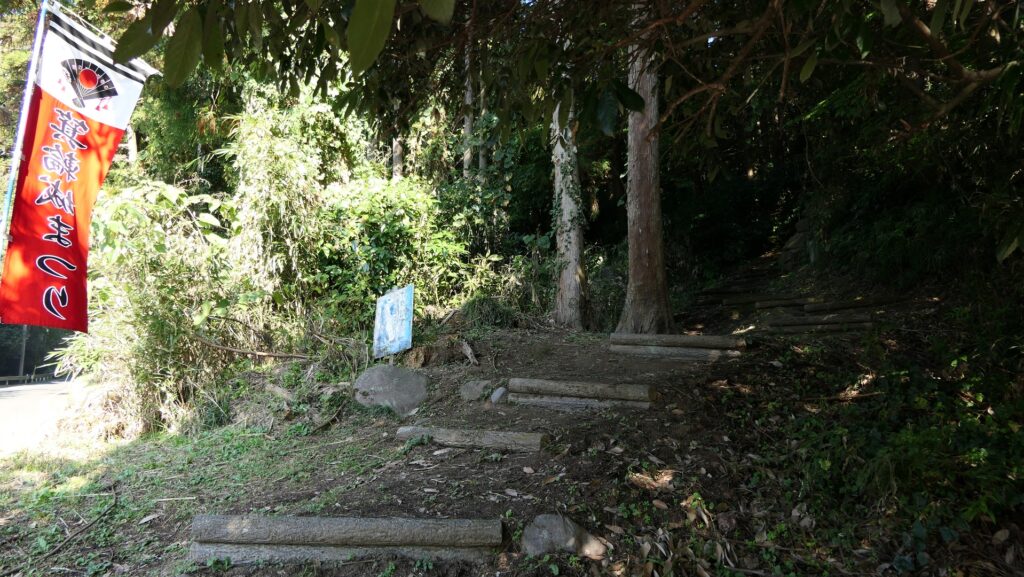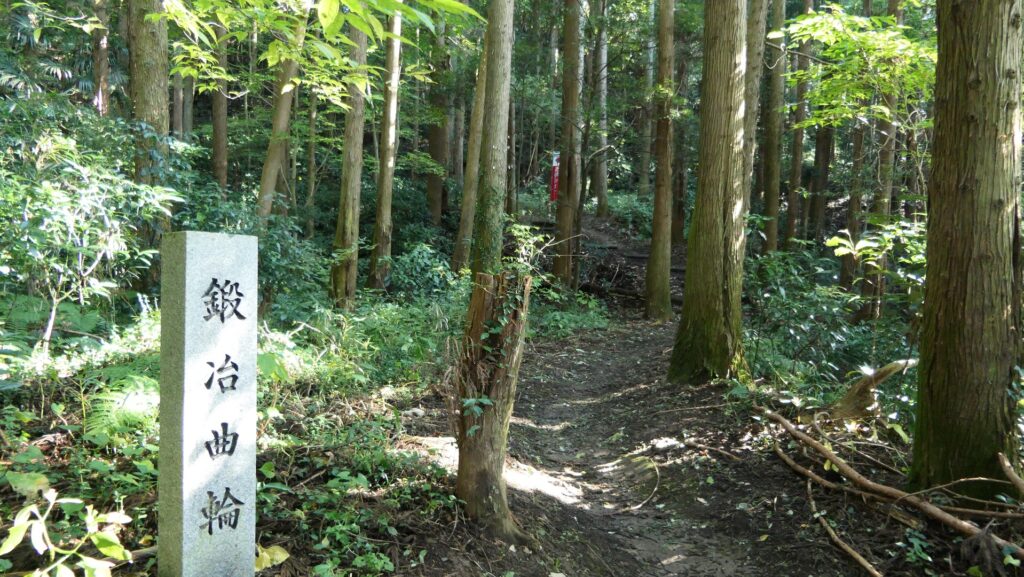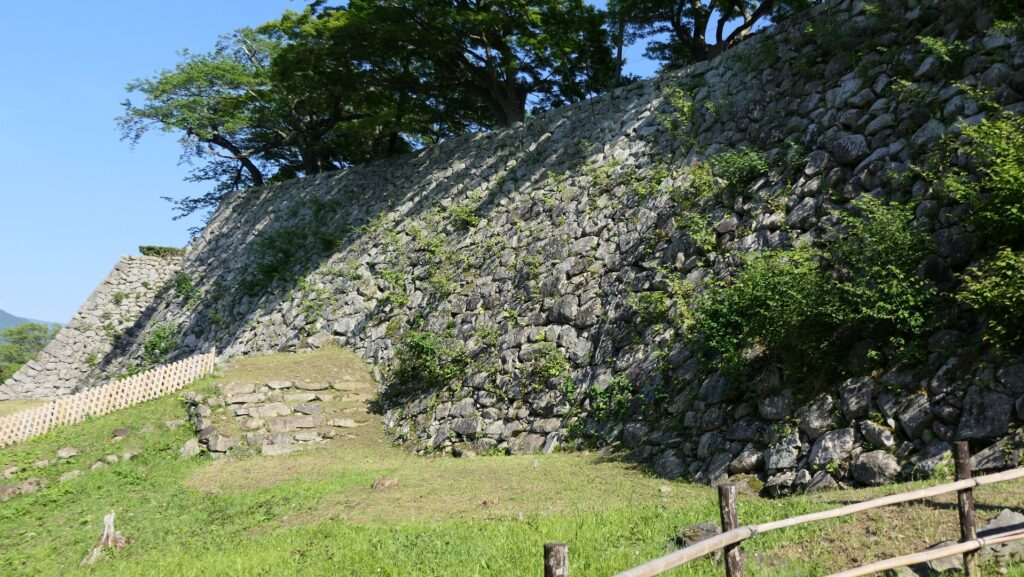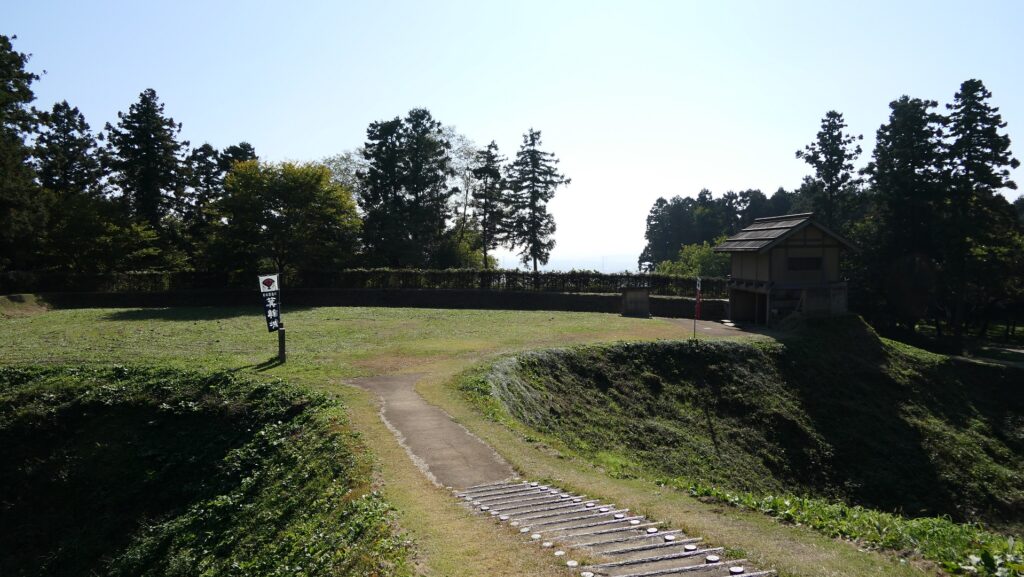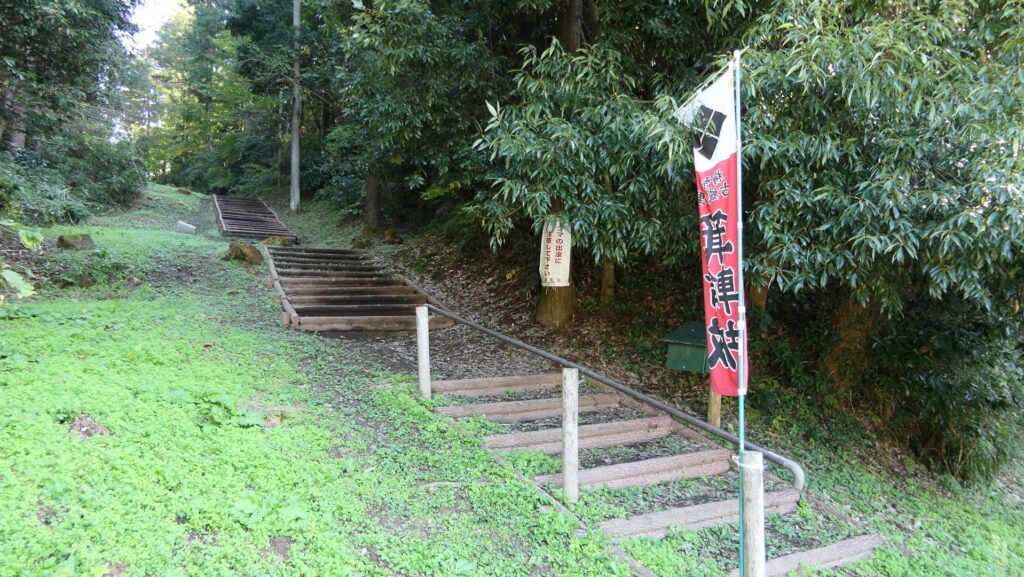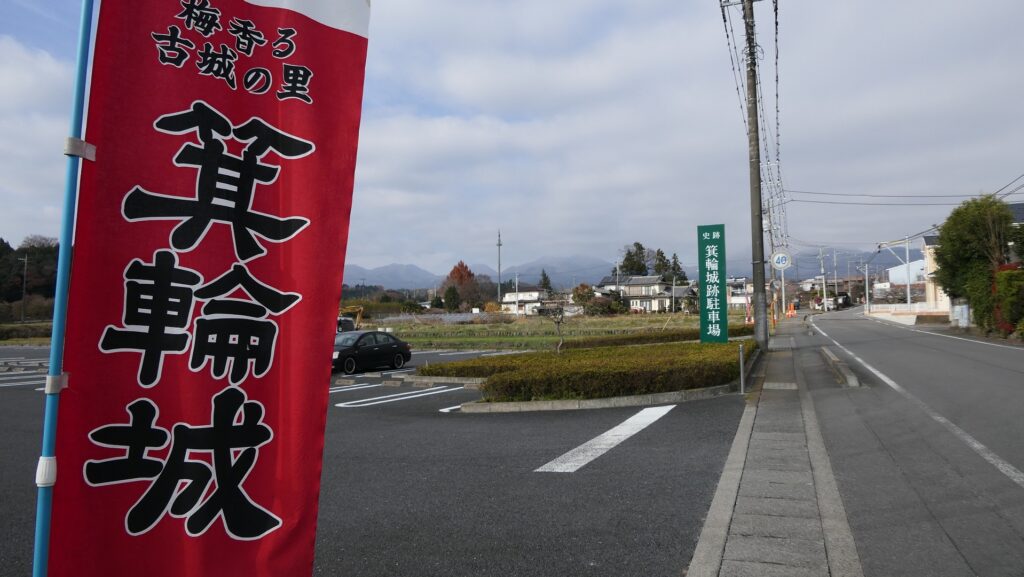Features
Three Routes to Castle Ruins
Today, the ruins of Samegao Castle have been developed as part of a historical park called the Hida Historical Village, which also includes ancient house ruins and groups of burial mounds. If you drive to the ruins, you can use the parking lot beside Hida Shrine which also has a long history. You can also stop by the information center of the park from the parking lot, where you can get a guide for the ruins.
The map around the castle
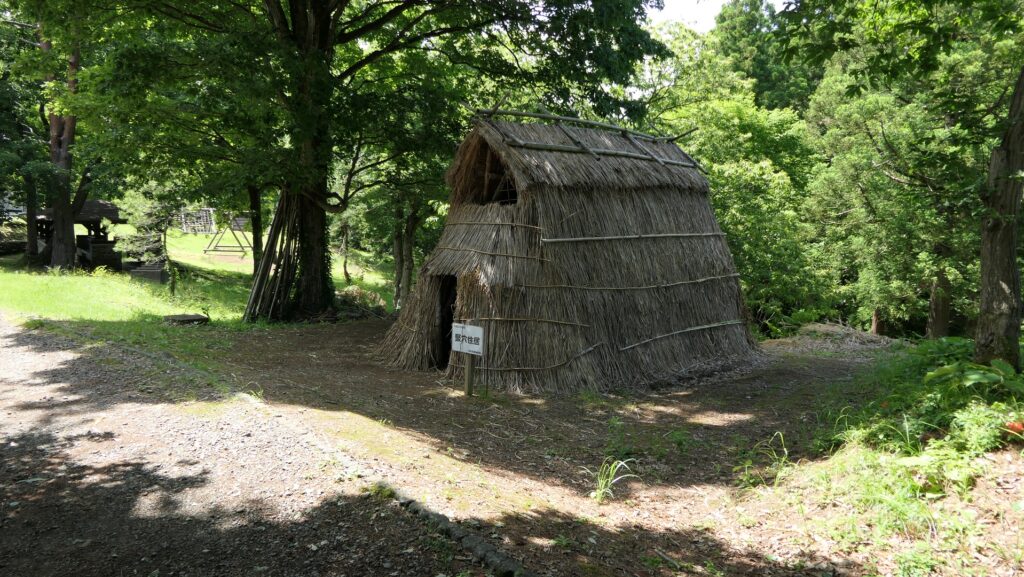
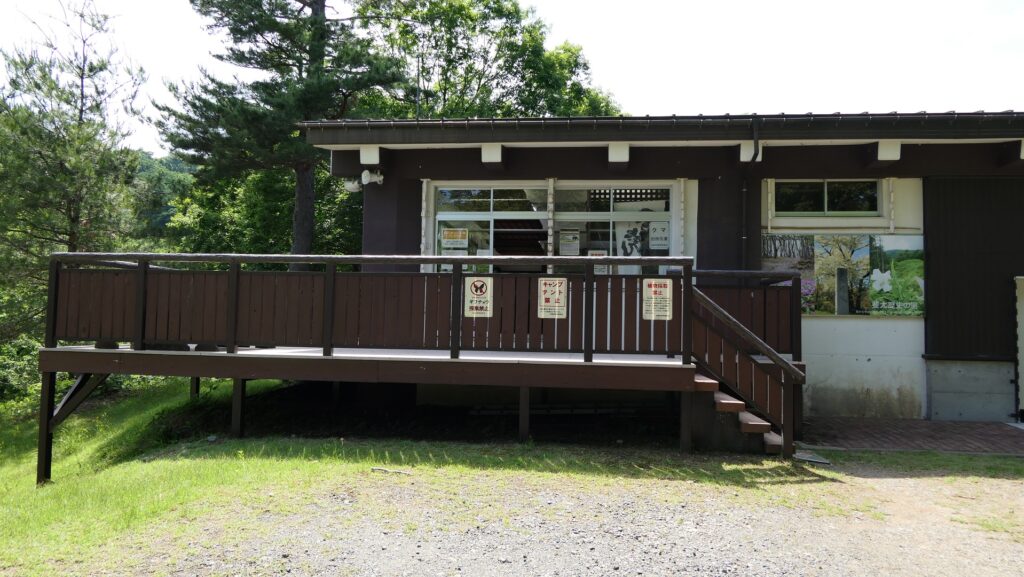
There are three routes to the castle ruins, which are the Eastern, the Northern and the Southern Routes. The former two routes start from the information center. In addition, the northern one has few historical items, so if it is the first time for you to visit the ruins, the eastern one would be better. The northern one can be used when you return.
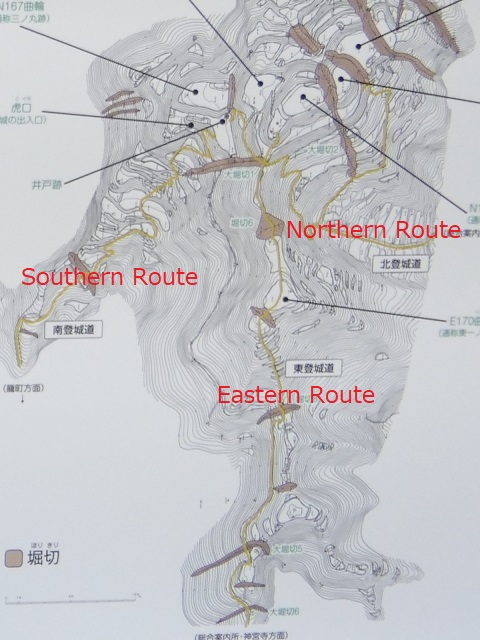
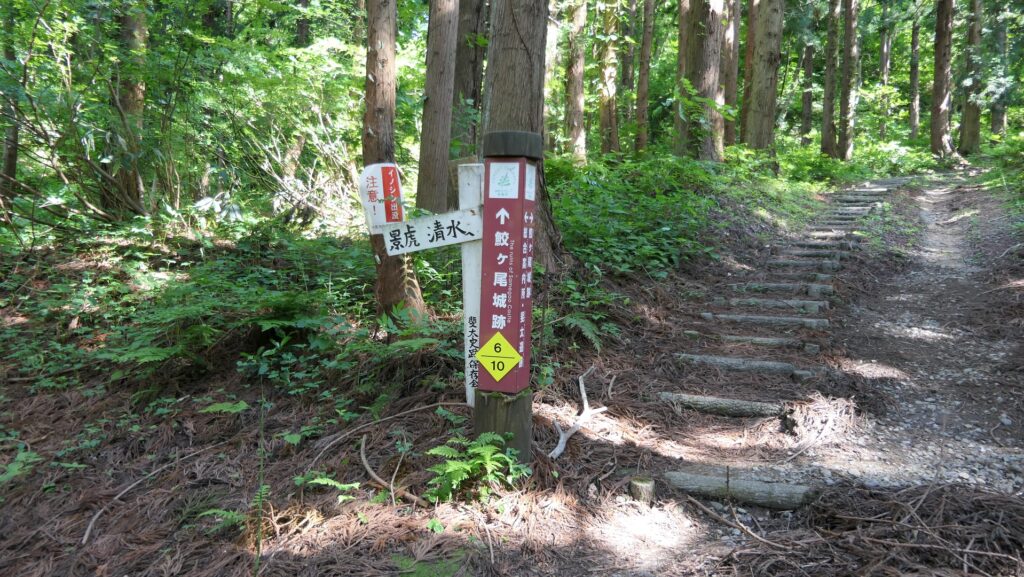
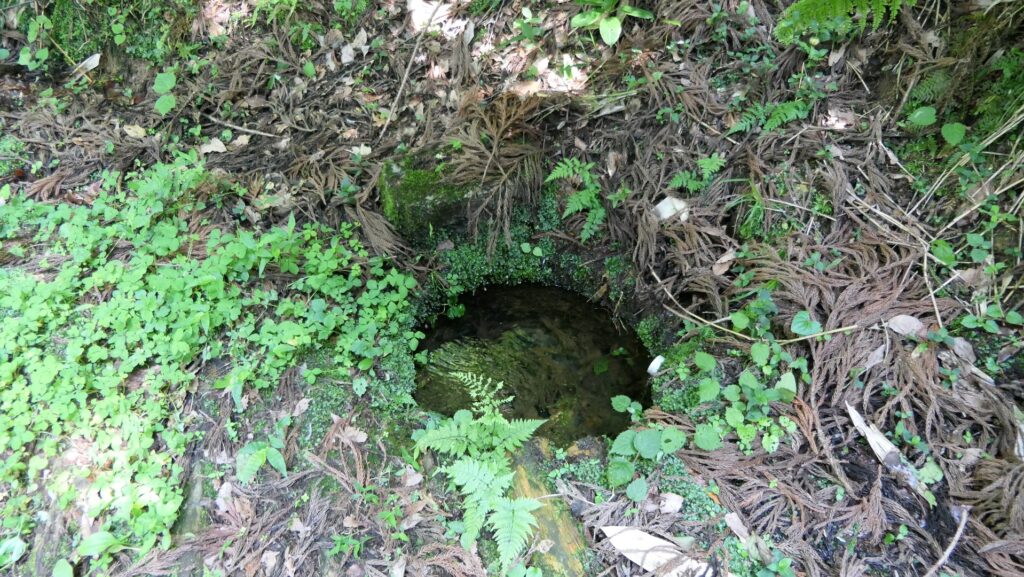
Going on Eastern Route
If you choose the Eastern Route as the original back route of the castle, you will walk on the route which goes on or beside the ridge of the mountain. You will eventually see the sign for “O-horikiri” or “Large Ditch 6” in Japanese. This is around the entrance of the ruins. You will come to Large Ditch 5, followed by several other ditches. The route is cut narrow over these ditches.
The relief map around the castle

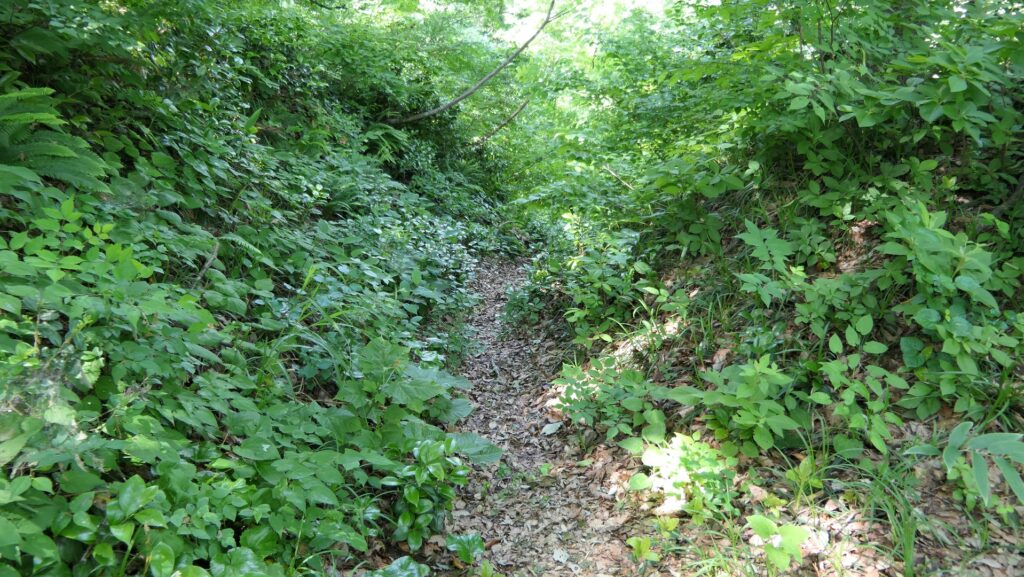

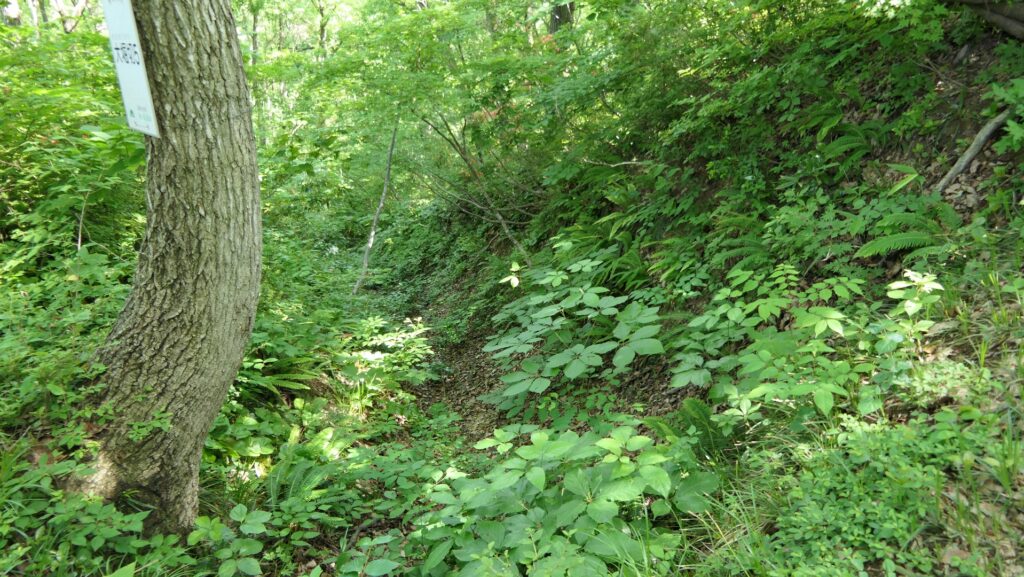
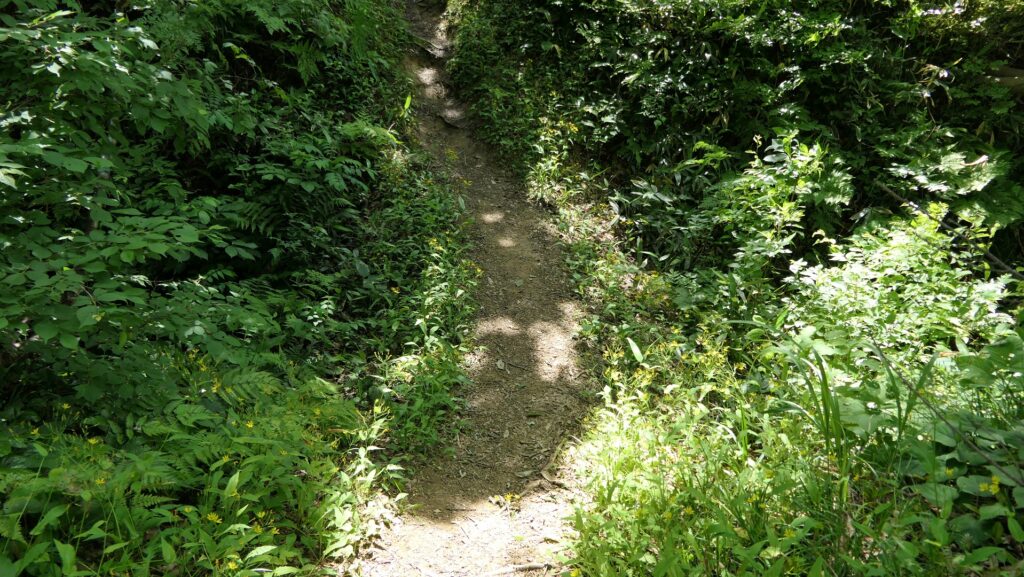
Then, you will be in the Eastern First Enclosure which seems to have been a lookout.
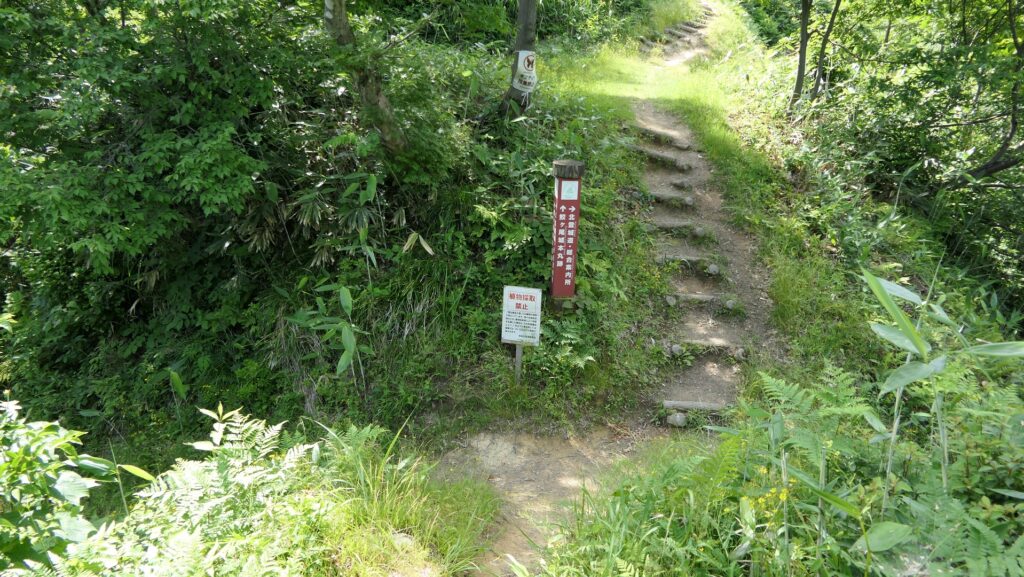
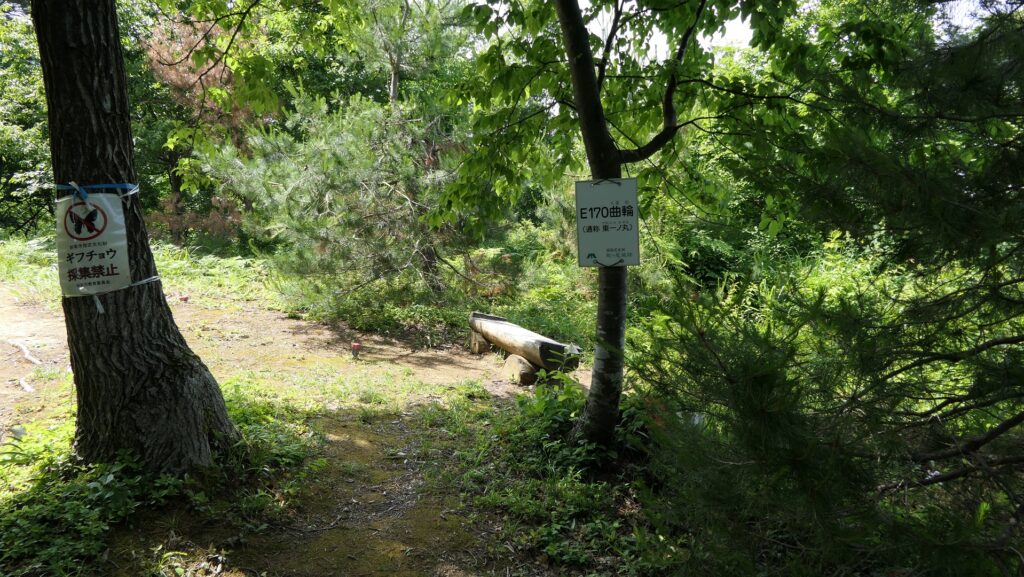
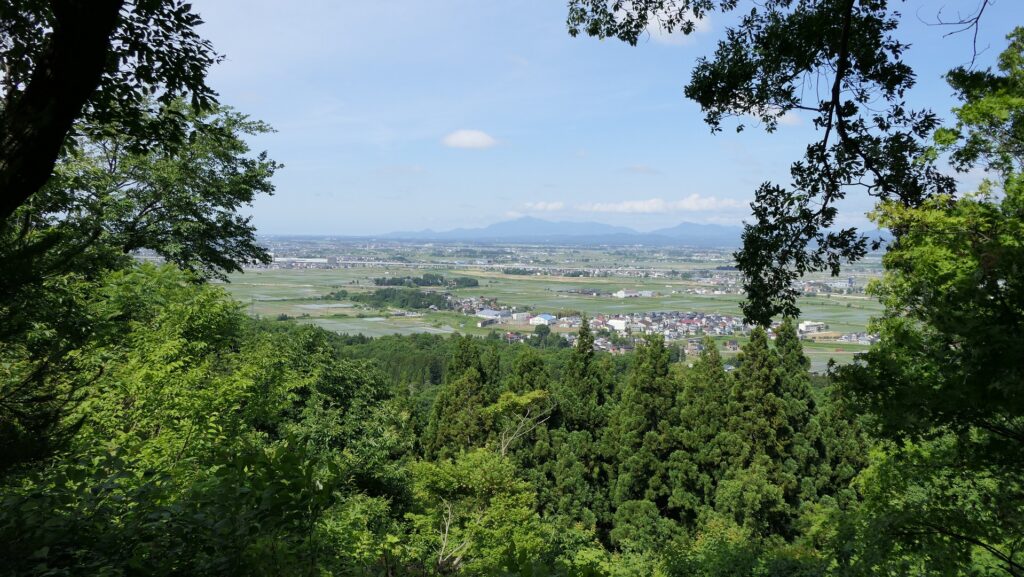
After passing Ditch 6, you need to climb a very steep slope with a rope to the next enclosure. This must have been an important point for defense in the past.


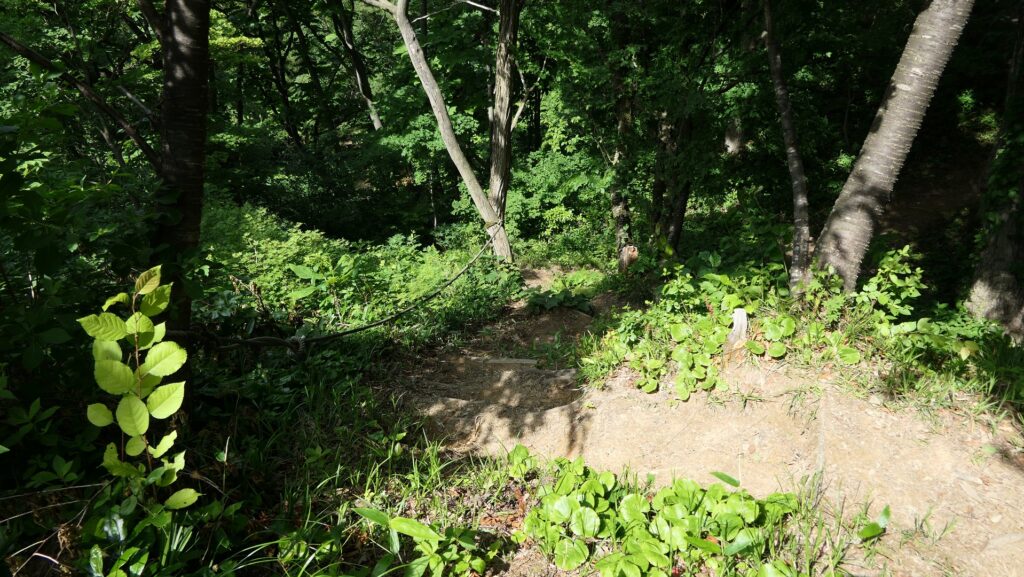
You will soon reach Large Ditch 1, which is also the meeting point of the Eastern and the Southern Routes.
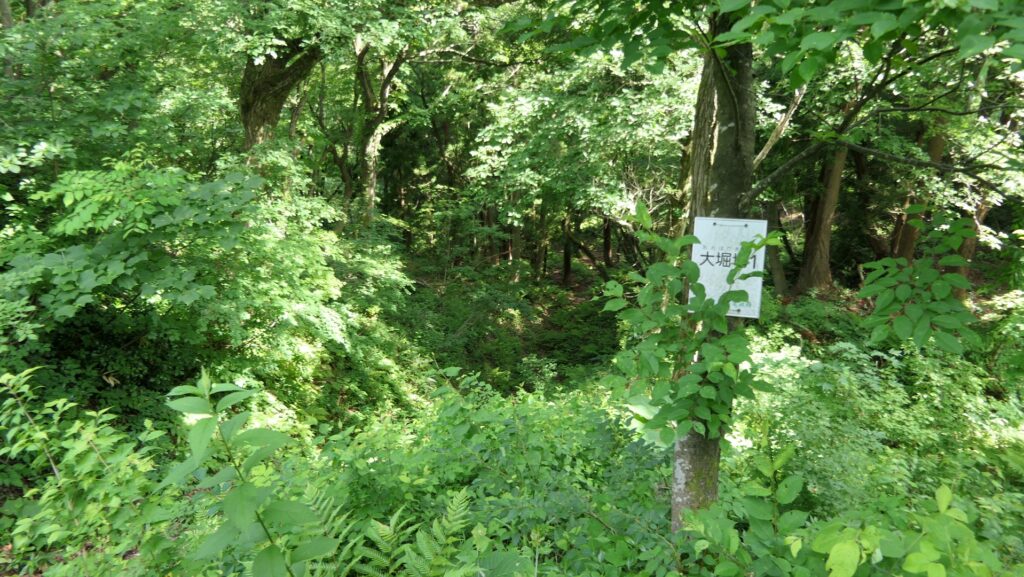

Second and Third Enclosures on Southern Route
In fact, the Southern Route was the original main route of the castle. The route zigzags through a valley and on another ridge to make enemies attack slowly. The Third and Second Enclosures are the last parts of the route after the ruins of the gateway for defense, called Koguchi. The excavation team found traces of a fire from both enclosures, probably because of the Otate Rebellion. In particular, a burned rice ball was found in the Third Enclosure, which may have been the portable ration for a soldier.

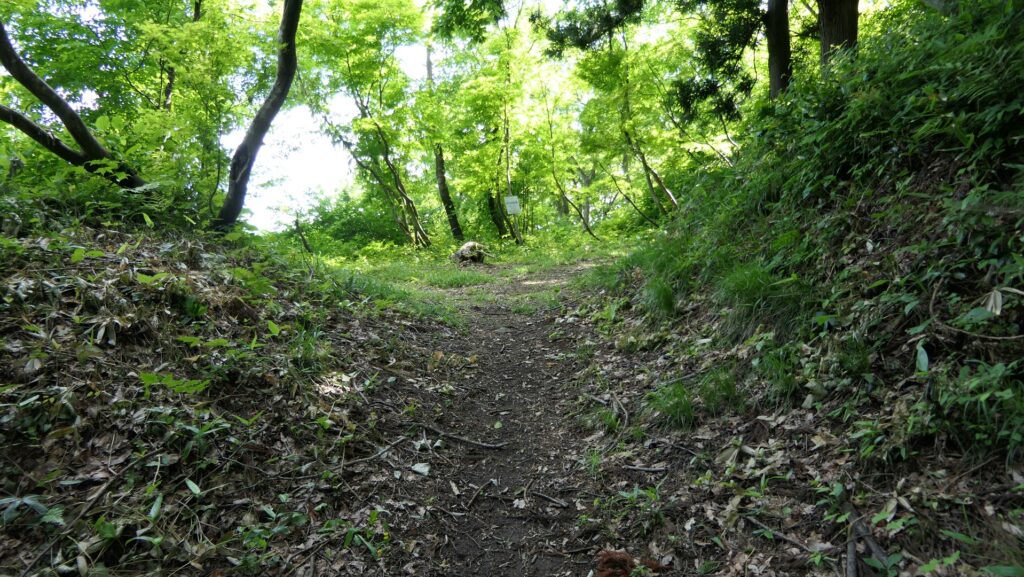
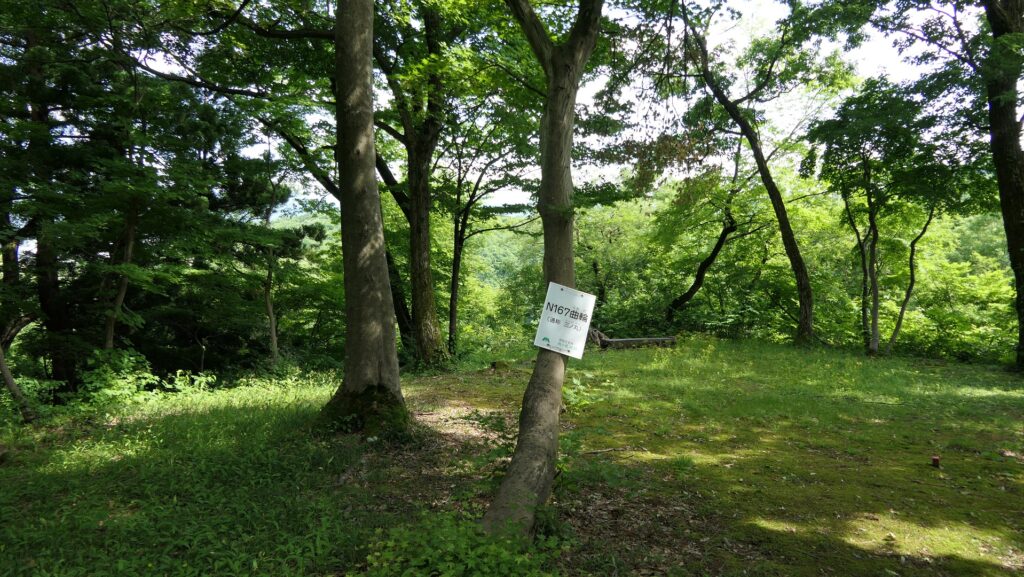
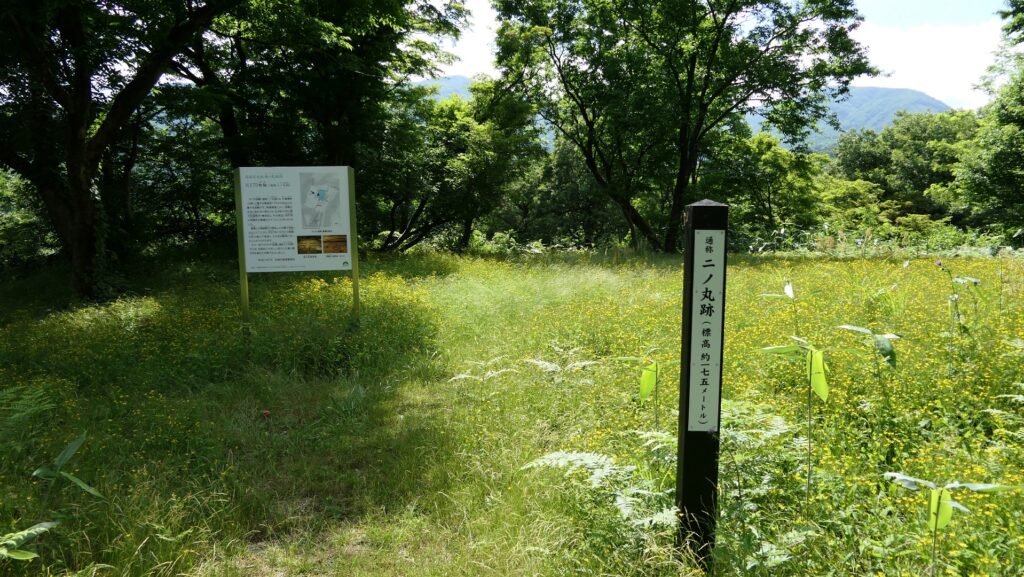
To be continued in “Samegao Castle Part3”
Back to “Samegao Castle Part1”

